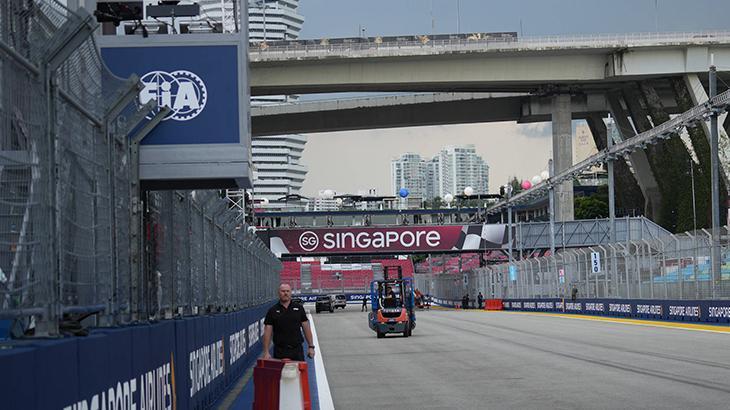F1 declares Singapore GP first ever 'heat hazard' race under new safety rule
Formula 1's governing body, the FIA, has designated the Singapore Grand Prix as a 'heat hazard' race, triggering a new driver cooling rule for the first time. With temperatures predicted to top 31 celcius and extreme humidity, the mandate requires all teams to fit their cars with new internal cooling systems to manage the brutal cockpit conditions.

The challenges of the Singapore Grand Prix have officially reached a new level, with the FIA declaring the event as the first-ever 'heat hazard' race under a rule introduced this year. The designation was made because the tropical heat and humidity are expected to push trackside temperatures past the 31 celcius mark, making the two-hour night race one of the most physically demanding events on the calendar.
Read More ›
The new ruling is a direct response to the infamous 2023 Qatar Grand Prix, where several drivers nearly collapsed and required medical attention due to the extreme heat and humidity. That race saw French driver Esteban Ocon vomit inside his helmet and Logan Sargeant retire early, unable to cope with the conditions.
The mandate for cooling vests
While drivers are not strictly required to wear the new cooling vests during the race, the 'heat hazard' designation makes it mandatory for all teams to install the cooling system in their cars. This ensures that no team gains a slight weight advantage by omitting the system if their driver chooses not to use it.
The cooling system itself involves a fireproof vest worn by the driver, fitted with a tube through which cooled liquid is pumped. Considering cockpit temperatures can soar past 40 celcius, on top of the multiple layers of fireproof clothing drivers wear, this is a serious safety measure.
Read More ›
Drivers' mixed response to the system
Drivers have been testing the vests intermittently throughout the year, with a mixed response regarding comfort and effectiveness.
George Russell, a director of the Grand Prix Drivers' Association (GPDA), welcomed the concept despite its current flaws. "When you're racing in 90% humidity and the cockpits are getting on for 60 celcius, it's a bit of a sauna inside the car, so I think we all welcome it," Russell said. However, he noted that the tubes running around the ribs are uncomfortable, especially under high G-force cornering.
Fellow GPDA director Carlos Sainz called the FIA's decision "fair," noting that the combination of high temperature and humidity is what pushes Singapore to its limits. Sainz pointed out the current challenge: making the system last. The rules require it to function for the entire race, but early trials have seen systems break down after as little as 15–30 minutes.
"If it works, it's better, because then you suffer a bit less," Sainz commented, though he admitted he's not worried about finishing the race even if the system fails.
Read More ›
Fernando Alonso agreed, calling it a "trade-off." The slightly thicker, less comfortable vest is the price drivers must pay for the cooling relief it provides. The added complication is that if the system stops working, the insulated vest and the stagnant liquid inside can actually make the driver hotter than if they weren't wearing it at all.
Teams have adopted different engineering solutions for fitting the pump and cooling device, with some placing it at the front of the chassis and others near the side-impact structures, reflecting the complexity of integrating the new safety feature into the tight confines of an F1 car.










